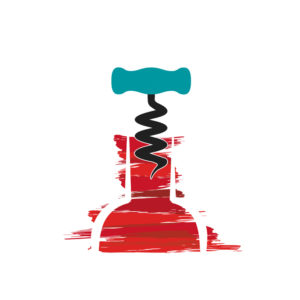I recently had the opportunity to speak with a group of 23-year olds about wine. I asked them how they felt about wine with screw cap closures as opposed to cork closures. They wholeheartedly agreed that they preferred screw cap closures.
 “I don’t even know how to use one of those things,” one young man said.“You mean the corkscrew?” I inquired.
“I don’t even know how to use one of those things,” one young man said.“You mean the corkscrew?” I inquired.
“Yes,” he affirmed, and the others laughed and concurred.
“I don’t even own one!” said another, and they launched into a discussion about how inconvenient it was to need some funny instrument to open a bottle. “What’s the point?” they asked me.
I mentioned a few passing thoughts about the elegance and tradition of the cork. They looked at me blankly. Apparently, the alleged romance of pulling a cork out of a bottle is lost on the younger generation. Speed and efficiency are the name of the game and a corkscrew has no place in that world.
It appears the corkscrew may be going the way of the skate key. Long ago, a “skate key” was used to fasten and unfasten metal roller skates to children’s tennis shoes. Kids fastened the metal skates (yes, even the wheels were metal, making for a fairly bumpy ride!) onto their feet and then put the skate key on a chain around their necks until they needed to remove the skates.
Everyone owned the then ubiquitous skate key. They were as commonplace as, well, corkscrews—until of course, the old-fashioned skates were replaced by the infinitely better boot-style roller skates and skate keys all but disappeared. Nowadays you may encounter a skate key in your grandmother’s attic or perhaps an antique shop.
All of this makes me wonder—will the corkscrew suffer the same ignoble fate as the skate key? Will the once grand cork fall from grace altogether and be relegated to the history books? It could very well happen.
Corks have been used to seal wine bottles for centuries. Made from cork bark, they are effective and practical. All natural cork is the best quality and used in high-end wines. Most of the corks used in inexpensive bottles are actually composite cork: cork and cork byproduct, all chopped up and glued together. It’s kind of like Chicken McNuggets versus Chicken Strips. They look like the real thing, but they’re not. And sadly, these composite corks suffer from the same problem that natural corks do – cork taint.
Corks can be affected with “cork taint” which is the presence of the chemical TCA, or Trichloroanisole. TCA taints the aroma and the taste of the wine, resulting in “corked” or spoiled wine. Corked wine has the distinct smell and flavor of old, wet cardboard. It is not harmful to consume but the aromas and flavors are reduced and masked by the unpleasant odor. Statistically, one bottle in twelve is corked, in spite of the wine industry’s best efforts to prevent TCA.
The official name for the screw cap closure is the Stelvin. It has been enthusiastically embraced by New Zealand, in particular, and can be found sealing most bottles of their fabulous sauvignon blancs and pinot noirs. The rest of the world has been less enthusiastic although screw caps are becoming increasingly popular.
There’s no question that screw caps are the best option for wines that are not intended to age, such as most white wines, roses, and youthful fruity red wines. The screw cap allows no oxygen in the bottle and the wines retain their fresh, fruity qualities. It is unknown whether screw caps could provide a viable option for fine wines that require aging and maturation in bottle.
Cork is porous and cork seals allow tiny amounts of oxygen to enter a bottle of wine over time, resulting in what is called “micro-oxygenation.” This micro-oxygenation, it is believed, allows the wine to mature and develop in bottle, softening tannins and adding to the complexity of the wine.
As screw cap seals do not allow any oxygen to enter a bottle, purists are concerned that wines from screw-cap sealed bottles may not age in the same way as a wine from a cork-sealed bottle. Experiments on bottles sealed with corks versus screw caps are now being conducted in some of the great wines regions of the world. With luck, we should have definitive answers in 5-10 years after these test wines have been allowed to age.
In the end, what matters most is the flavor of the wine. A sommelier I know told me of a couple who recently visited his restaurant. The man was planning to propose to his girlfriend and brought in an expensive old bottle of wine for them to share with their meal. When the sommelier opened the wine, he realized immediately that it was corked.
Because this was the man’s own special bottle from his personal collection, the sommelier said nothing, but simply poured the wine. The couple enjoyed a wonderful dinner together and the evening ended very happily. As they left the restaurant, the man tipped the sommelier and thanked him effusively, commenting that it was the best bottle of wine they had ever tasted. The sommelier just smiled. Truly, beauty is in the eyes, or the palate, of the beholder.
Cheers!
Questions or comments? You can reach Elizabeth Kate at 4elizabethkate@gmail.com. Follow her on Instagram at @ielizabethkate!
Leave a Reply